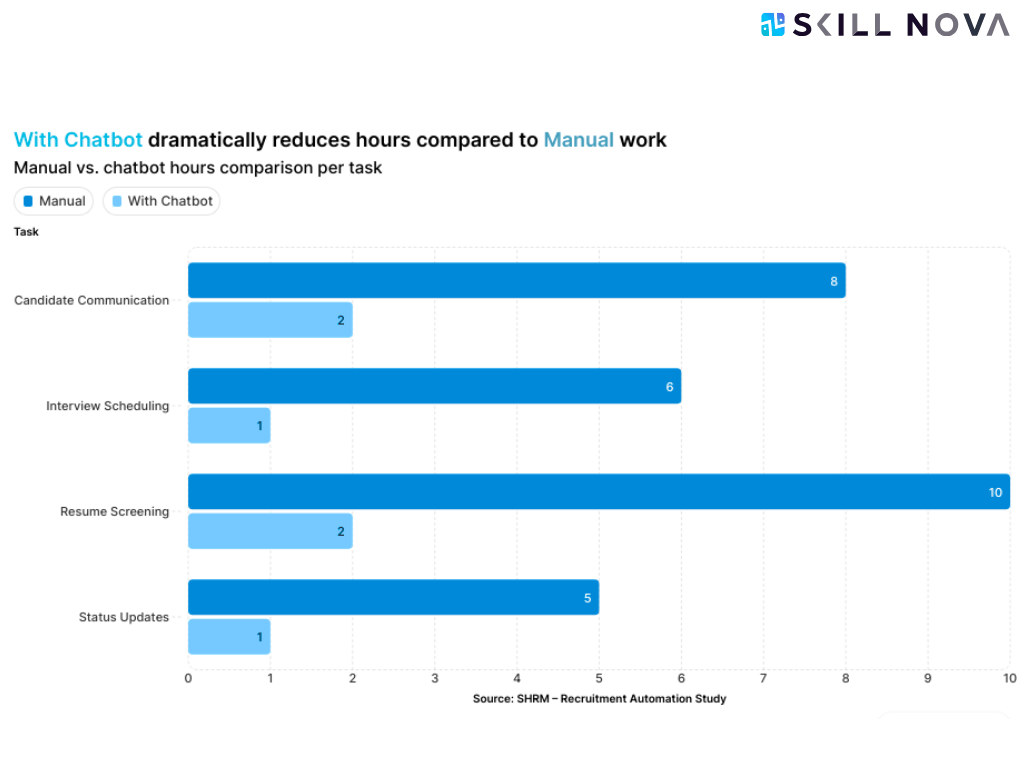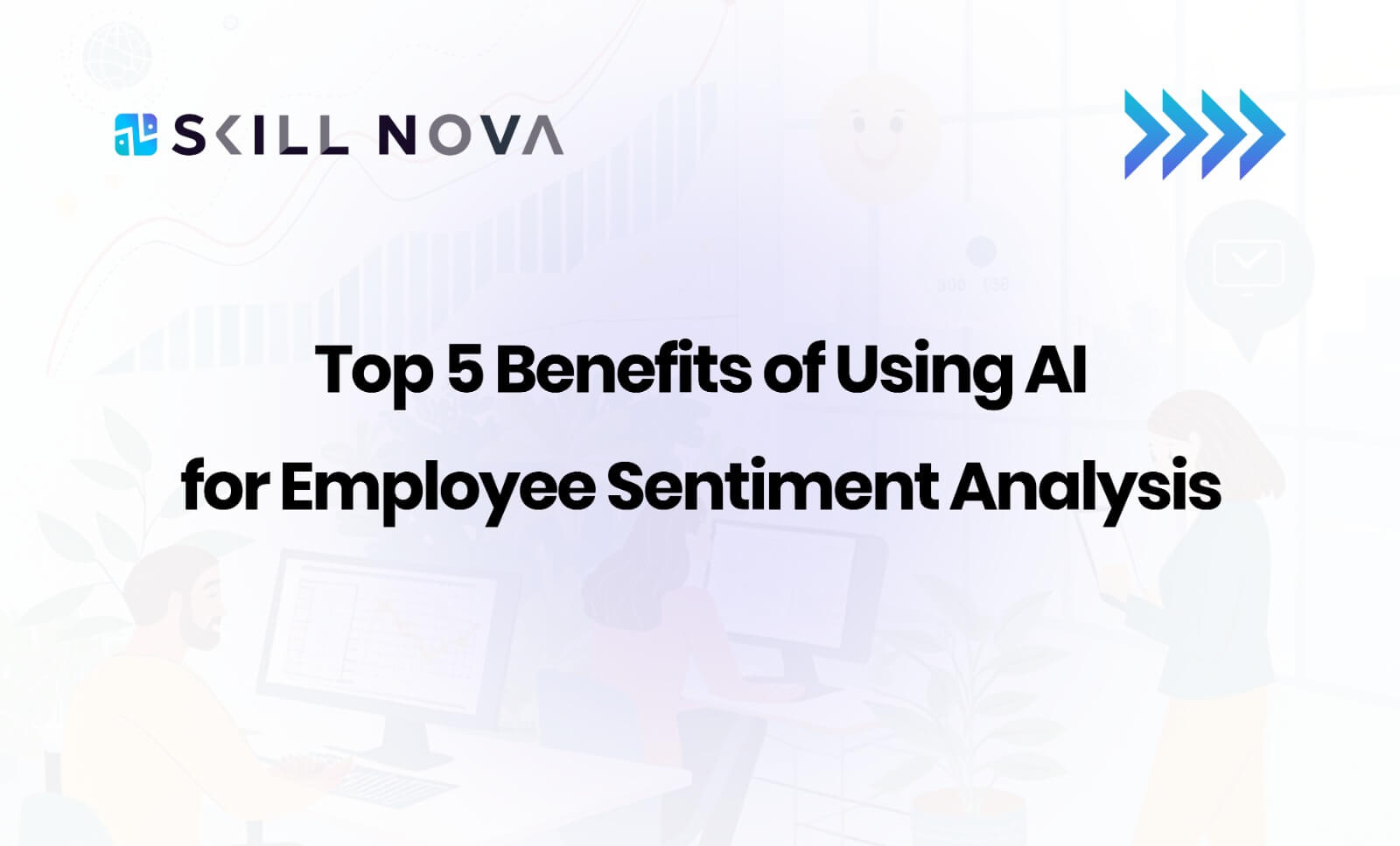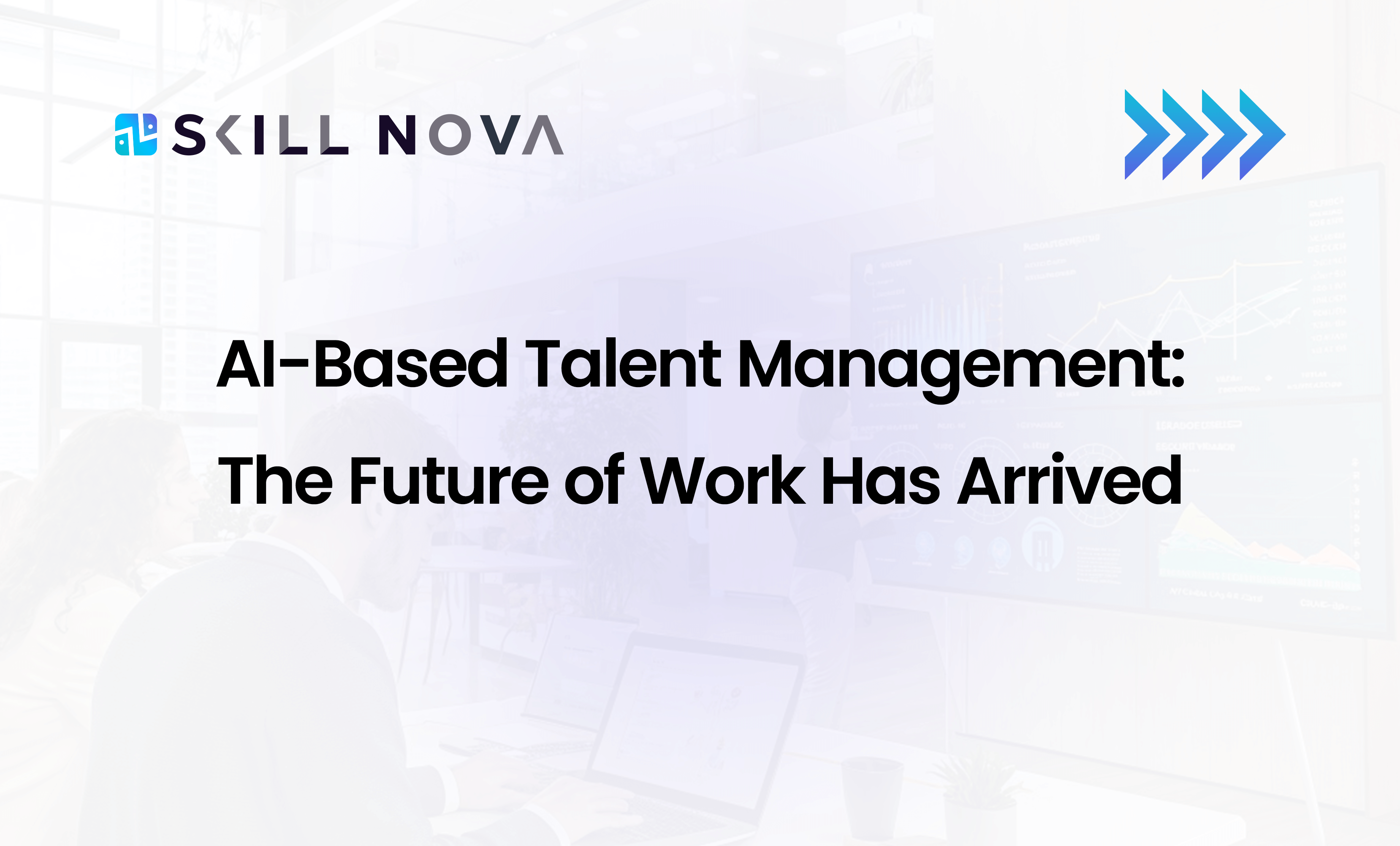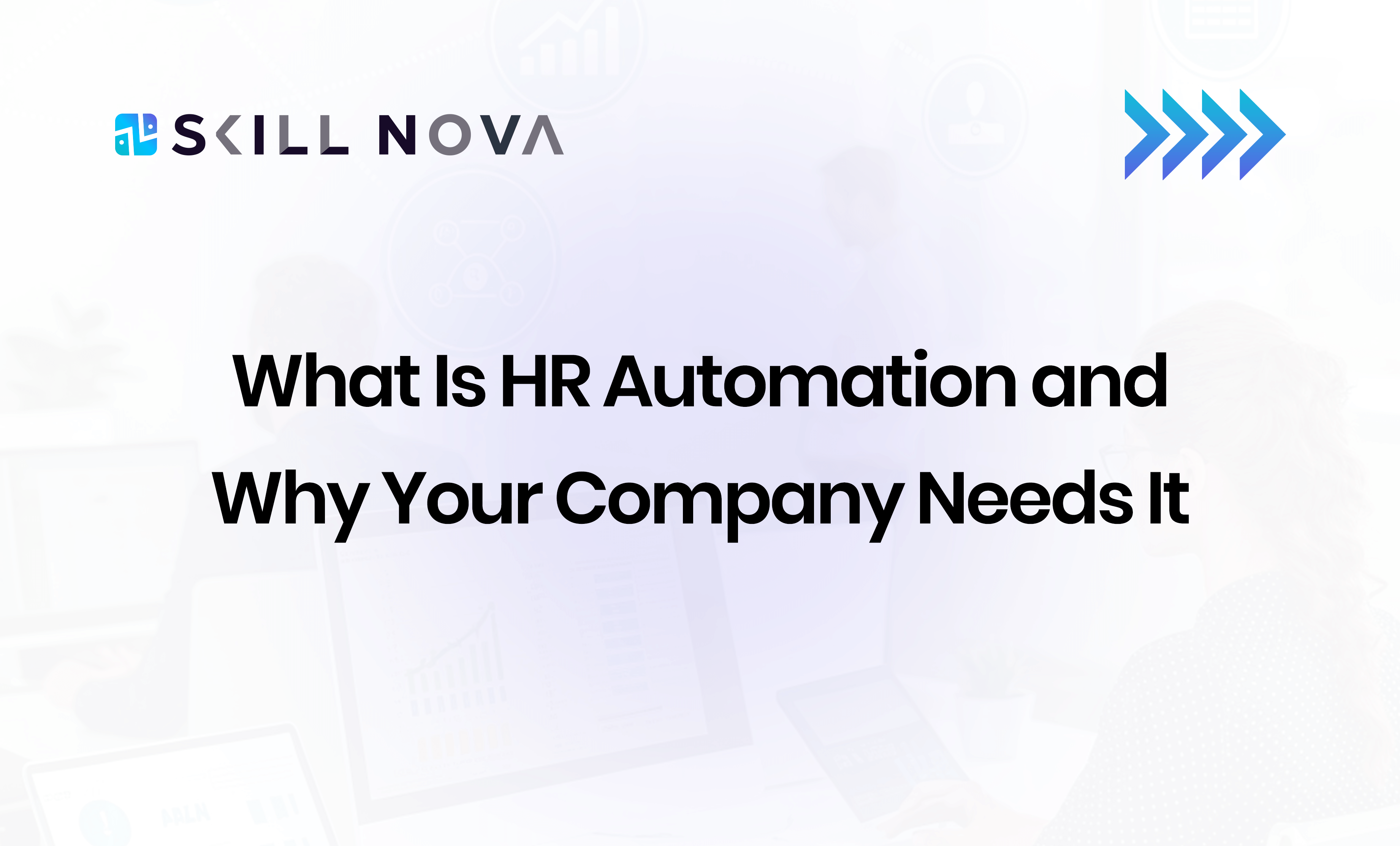Table of Contents
ToggleImagine if your team could course-correct mistakes the moment they occur, not at the end of the quarter, not even at the end of the week, but in real time. That’s the future of performance management, made possible by AI-powered real-time feedback loops. These systems don’t just collect data; they instantly interpret, analyze, and offer actionable suggestions. This shift transforms how companies, educators, healthcare professionals, and customer service teams operate. Real-time AI feedback systems are not just about performance metrics; they empower people and systems to evolve dynamically.
According to a recent Gartner report on digital workplace trends, organizations implementing AI-driven feedback processes report a 20% increase in operational efficiency and enhanced agility in responding to market demands.
Understanding the Concept of Feedback Loops
What is a Feedback Loop?
A feedback loop is a cycle in which the outputs of a system are routed back as inputs. The main goal is to use feedback to make informed adjustments that improve future performance. Think of a GPS: if you take a wrong turn, it recalculates the route based on your current position. Similarly, Real-Time Feedback Loops empower systems in organizational contexts to respond to inputs such as employee performance, customer satisfaction, or production metrics, and drive continuous improvements.
The Role of Timeliness in Real-Time Feedback Loops
Timeliness is the linchpin of effective feedback. Traditional performance reviews, which often rely on quarterly or annual cycles, leave organizations reacting to issues long after opportunities for intervention have passed. Real-time feedback, in contrast, provides insights in the moment, enabling proactive adjustments before problems escalate.
A Deloitte survey indicates that 63% of high-performing companies have adopted real-time feedback mechanisms to stay agile in today’s competitive market.
Continuous Performance Improvement (CPI) Explained
What Does CPI Mean?
Continuous Performance Improvement (CPI) is an ongoing effort to enhance products, services, or processes. It demands that organizations embrace a mindset of iterative progress. Rather than counting on one-time successes, CPI fosters a culture that is committed to perpetual betterment, leveraging tools like feedback loops, data analytics, and collaborative learning.
Why Continuous Improvement Matters
Continuous improvement is critical for survival in an age of rapid technological and market changes. Not only does CPI keep companies competitive and agile, but it also builds a resilient workforce that thrives on innovation and continuous learning.
According to a McKinsey report, organizations that commit to continuous improvement initiatives are 30% more likely to outperform their peers over the long term.
Limitations of Traditional CPI Methods
Traditional CPI methods often lean on lagging indicators—data gathered only after events have occurred. This reactive stance can delay corrective action and inhibit real-time decision-making. Manual data collection is prone to delays and subjective interpretation, leading to blind spots that hinder swift action.
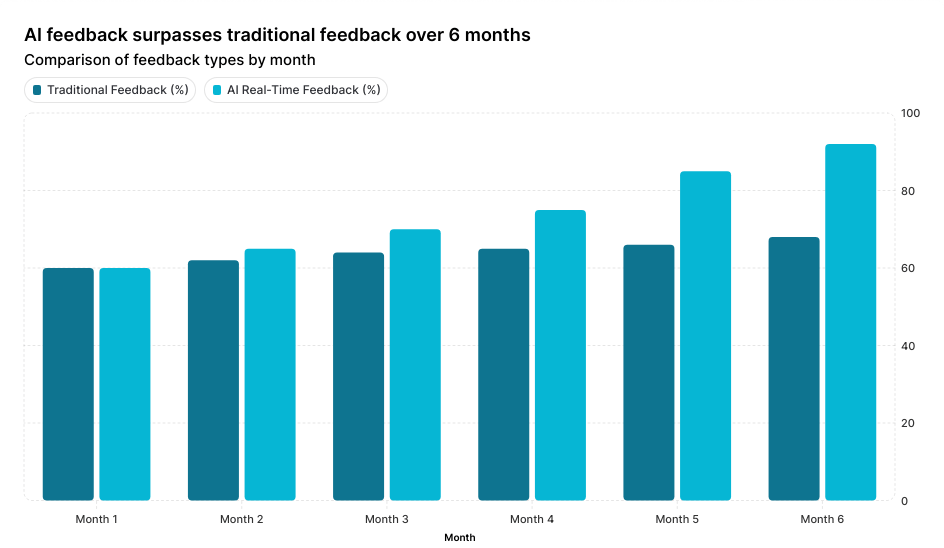
Figure: Employee performance improvement over 6 months, comparing traditional feedback vs AI-powered real-time feedback
The Power of AI in Real-Time Feedback Loops
How AI Enables Real-Time Feedback Loops
AI seamlessly bridges the gap between data collection and actionable insights. By continuously analyzing data streams from sensors, applications, customer interactions, and more, AI detects patterns and anomalies to provide immediate guidance. For example, if an employee falters on specific tasks, AI systems can flag these trends early and suggest targeted training or support.
An IDC study reports that companies leveraging AI for operational insights have seen error reduction rates improve by up to 40%, demonstrating the power of real-time intervention.
AI Tools and Technologies Used
- Machine Learning (ML):
ML algorithms let systems learn from patterns and gradually refine their predictions. This enhances the accuracy of feedback and improves its relevance over time. Industries leverage ML to accurately forecast outcomes like employee turnover or customer churn. - Natural Language Processing (NLP):
NLP helps AI interpret human language—processing emails, messages, call transcripts, and social media content to gauge sentiment and urgency. This enables organizations to evaluate qualitative feedback on a massive scale, quickly transforming it into actionable insights. - Predictive Analytics:
By combining historical data with real-time metrics, predictive analytics empowers organizations to anticipate and mitigate challenges before they become problematic. For instance, predictive models can correlate current behavior with potential productivity dips or customer dissatisfaction.
Practical Applications Across Industries
In Education and eLearning
Educational platforms today use AI to monitor student performance and adapt learning experiences on the fly. AI can immediately offer supplementary resources or adjust lesson difficulty dynamically if a student struggles with a topic. Teachers receive real-time insights into classroom performance, which helps them tailor lessons to meet diverse learning needs.
A recent report from EdTech Magazine noted that schools utilizing AI-driven learning management systems have observed a 25% increase in student engagement.
In Corporate Workplaces
AI analyzes productivity metrics, engagement scores, and even communication nuances to help managers pinpoint areas for improvement in real time. With dynamic dashboards, managers can visualize team dynamics, identify potential burnout, and effectively rebalance workloads. This targeted feedback fosters personalized coaching and development strategies.
In Healthcare
Wearable devices and patient monitoring systems embedded with AI can detect early signs of health issues, triggering immediate intervention. Healthcare professionals receive real-time alerts when vital signs deviate from standard patterns, facilitating prompt and often life-saving responses. Simultaneously, AI analyzes patient satisfaction data to refine care quality continuously.
In Manufacturing
Smart factories are rapidly adopting AI to oversee machine performance and production outputs. Should a machine operate below optimal levels, AI systems instantly flag the issue and recommend adjustments. This proactive approach minimizes downtime and enhances operational safety and efficiency.
In Customer Experience
AI takes customer service to the next level by analyzing real-time interactions to detect dissatisfaction or confusion. Advanced feedback tools provide customer service agents context-specific prompts to address issues immediately. This feedback loop continuously improves both customer satisfaction and service delivery.
A report from Forrester Research highlighted that companies applying real-time AI feedback in customer service experienced a 15% increase in customer satisfaction scores within the first year.
Key Benefits of AI-Powered Feedback Loops
- Speed and Accuracy:
Unlike traditional feedback mechanisms, AI systems provide fast, data-backed insights. This speed increases responsiveness and reduces the margin for error in decision-making. - Personalization at Scale:
AI’s robust data analytics capabilities allow feedback tailored to individual employees, students, or machines, ensuring that each message is relevant and actionable. - Proactive Improvement:
By identifying issues early, AI empowers teams to take preventive actions before minor issues escalate into major problems. - Scalability:
Traditional feedback systems can falter as organizations grow. In contrast, AI-driven systems analyze thousands of data points concurrently without compromising performance.
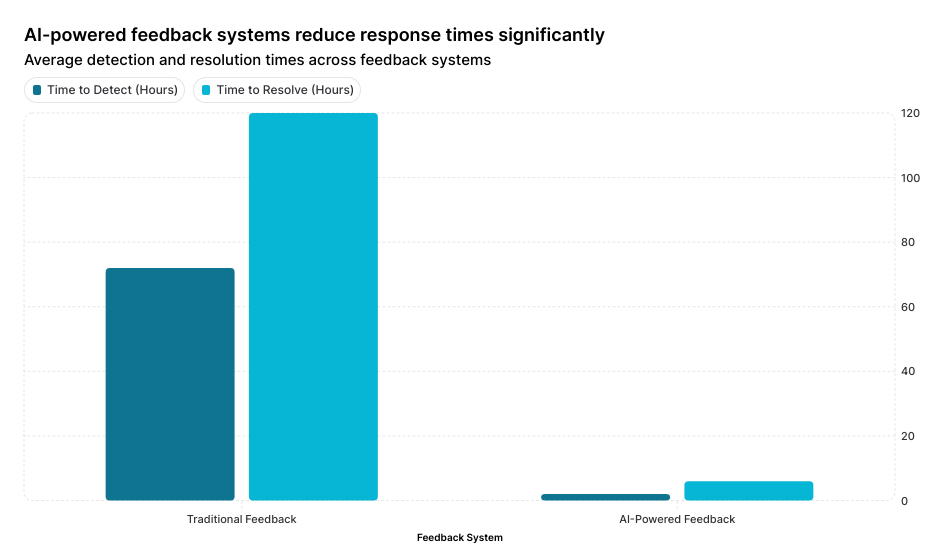
Figure: Average time to detect and resolve issues comparing traditional feedback systems and AI-powered feedback loops.
Common Challenges and Limitations
- Data Privacy and Ethics:
Continuous monitoring introduces ethical challenges and requires stringent measures to ensure privacy compliance under regulations like GDPR. Transparency and consent must guide data collection practices. - Implementation Complexity:
Deploying AI-driven feedback systems demands more than just software installation—it requires integrating with existing workflows, comprehensive team training, and regular model refinement. - Algorithmic Bias:
The AI system can inadvertently generate unfair or skewed feedback if the training data is biased. Continuous audits and diversified datasets are essential to maintain equitable outcomes.
Best Practices for Implementing AI Feedback Loops
- Set Clear Goals:
Start by defining the performance metrics you wish to improve—whether reducing employee churn, enhancing training quality, or boosting customer satisfaction. Clear objectives will guide your system’s configuration and data prioritization. - Start Small and Scale Gradually:
Pilot the system with a smaller group to evaluate its performance, gather user feedback, and fine-tune the model before scaling up across larger departments or the entire organization. - Continuously Monitor and Update Models:
AI models must evolve along with new data. Regularly retrain models to ensure they remain accurate, relevant, and aligned with your evolving company goals.
The Future of AI in Continuous Performance Improvement
Emotional AI and Empathy Mapping
Future AI systems must advance into emotional intelligence, reading tone, facial expressions, and nuanced language to provide empathetic, context-sensitive feedback. Emotional AI will help create truly adaptive systems that are smart and emotionally aware.
Fully Autonomous Feedback Ecosystems
Looking ahead, the evolution of AI promises fully autonomous feedback ecosystems that can detect issues and initiate remedies automatically, whether that means adjusting workloads, triggering training modules, or reallocating resources.
Recent innovations showcased at the CES technology event indicate that fully automated AI feedback systems are becoming a reality. Initial trials report up to a 35% improvement in operational efficiency.
SkillNova’s 360 AI Feedback: Elevating Skill Development
SkillNova’s 360 AI Feedback system takes a fresh and powerful approach to personal and professional growth. It combines smart feedback, real-time insights, and tailored learning paths to help people build the right skills at the right time. Whether you’re working on your development or improving team performance, this system helps pinpoint what you’re doing well and where you can improve, so your growth is always focused and purposeful.
Key highlights include:
- Live Skill Tracking: Your abilities are constantly assessed, giving you up-to-date suggestions for improvement.
- Customized Growth Plans: Training paths are crafted to match your career ambitions and your company’s bigger goals, so you’re not just learning, you’re moving forward.
- AI-Driven Real-Time Feedback Loops: Immediate feedback keeps you on track, helping you adjust quickly and grow faster with every step.
Conclusion
AI-powered Real-Time Feedback Loops represent a transformative shift in how organizations gauge, evaluate, and enhance performance. By shifting from a reactive, delayed model to one that is proactive and data-driven, these systems offer the potential to drive innovation, increase engagement, and improve efficiency across industries. As AI technology advances, the future points to increasingly autonomous and emotionally intelligent feedback systems, paving the way for a new era of continuous performance improvement.
For organizations ready to harness these advancements, platforms like SkillNova.ai offer cutting-edge AI-driven feedback solutions that empower teams with real-time insights and actionable recommendations. By leveraging SkillNova.ai’s technology, businesses can accelerate growth and stay competitive in today’s fast-paced digital landscape.
FAQs
- What are Real-Time Feedback Loops in AI?
Feedback loops utilize AI to collect, analyze, and immediately act on live data, enabling continuous improvement across various systems. - How does AI improve performance in real time?
AI processes vast amounts of data in real time, instantly providing insights and actionable suggestions, allowing teams to adapt before issues escalate. - Can small businesses afford AI-powered Real-Time Feedback Loops?
Yes. Today’s cloud-based platforms offer scalable solutions that can be customized for businesses of all sizes, ensuring affordability and effectiveness. - Are AI feedback systems secure?
With robust data handling protocols and adherence to privacy regulations like GDPR, AI feedback systems can be secure and ethical. - Which industries benefit most from real-time AI feedback loops?
While education, healthcare, manufacturing, corporate workplaces, and customer service sectors see significant benefits, virtually every industry can leverage real-time feedback to enhance performance.

